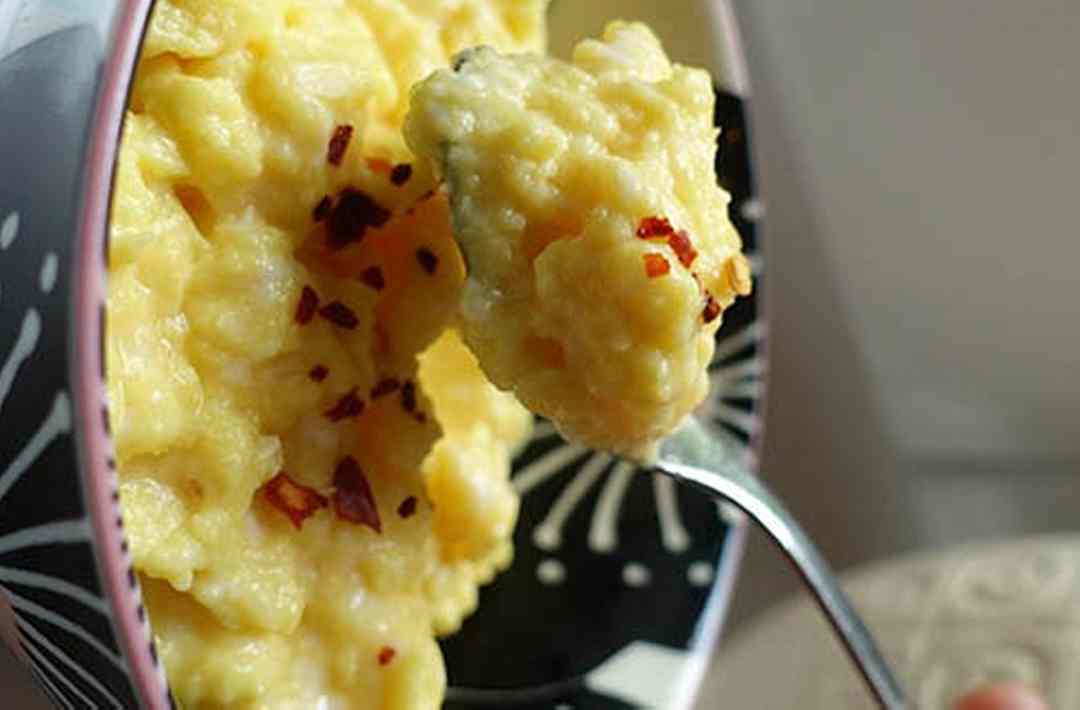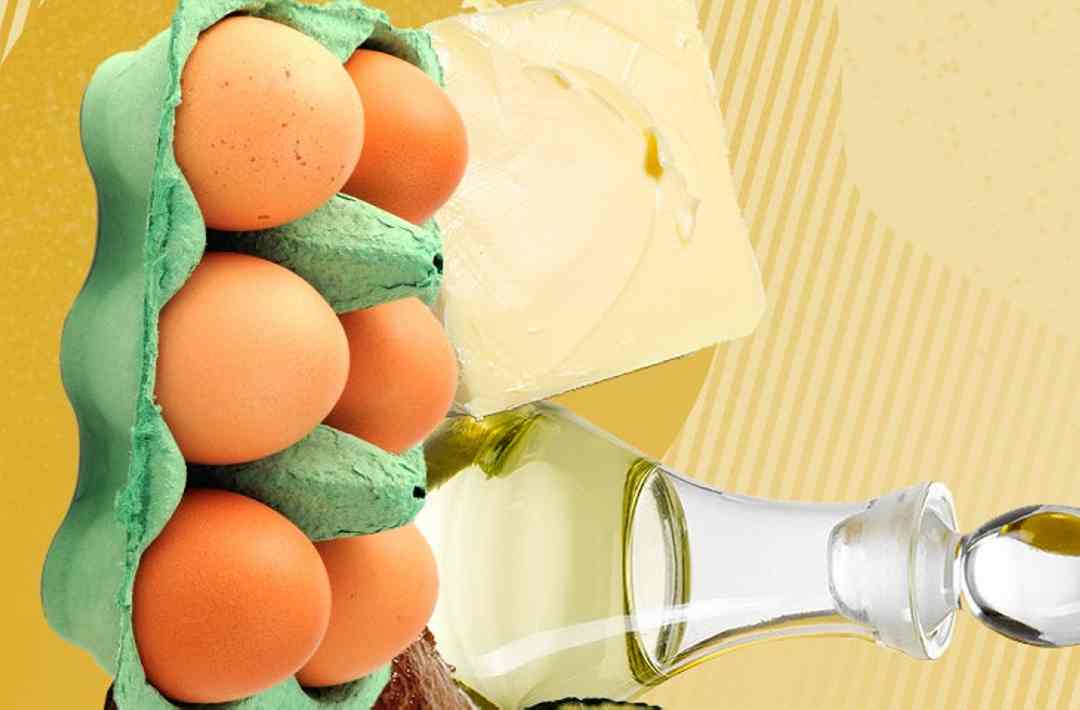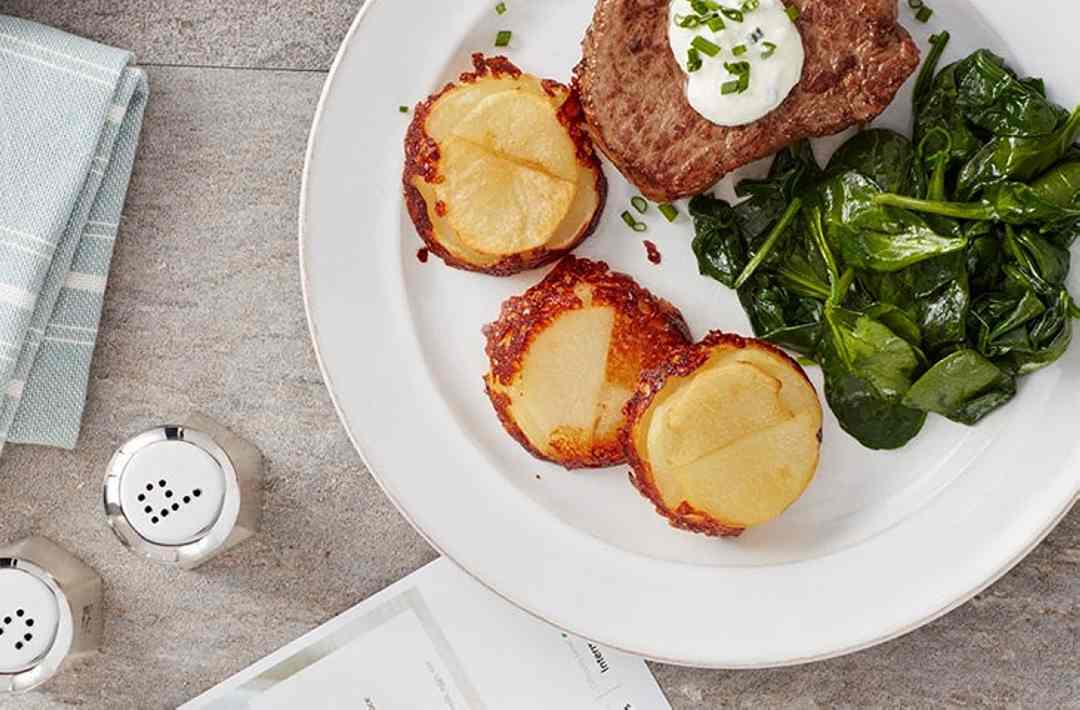For a long time, I liked the idea of scrambled eggs much more than I liked actual scrambled eggs. My dad would make them for me often as a kid, but they were always rubbery and dry (sorry, Dad)—far from my light, fluffy, and creamy expectations.
When I started to make my own scrambled eggs, I realized what my dad had been doing wrong: He’d been cooking the eggs for way too long over a heat that was definitely way too high. When it comes to making the perfect scrambled eggs, it’s not about which ingredients you do or don’t use—what’s really going to determine how they turn out is how long you cook them and the level of heat that you use. If you know how to balance these elements, you can use the same exact ingredients to make whatever style of scrambled eggs you prefer, whether that’s fluffy and firm or soft and creamy.
There are a few other tips that come in handy, too, like using the right pan and knowing when you should season the eggs or exactly how much cooking oil or butter you should use. Here, Nick Korbee, executive chef of Egg Shop in New York City and author of the Egg Shop Cookbook, explains everything you need to know to make perfect scrambled eggs, no matter how you prefer them.
1. Gather your ingredients and tools.
For any scrambled egg recipe, Korbee says that all you’ll really need are eggs and a fat source to cook them in, which can be olive oil, butter, ghee, or whatever you like. He says you should use a tablespoon of fat for every two eggs you cook.
There are a lot of strong opinions out there about whether or not you should add milk to scrambled eggs. I personally like adding a splash of milk or cream directly to my eggs before I start cooking. I find that it makes them more tender—plus, it’s a great way to add more volume to your scrambled eggs if you’re maybe running low and need to feed a few. But this is really up to personal preference. You don’t need milk to make scrambled eggs creamy, as long as you follow the cooking instructions in step 3 below.
As for tools, Korbee says you’ll need a bowl, fork, rubber spatula or wooden spoon, and a non-stick skillet.
2. Scramble the raw eggs with a fork.
Once you have everything together, crack your eggs into a bowl and use a fork to whisk them together. Combine them so that the whites and yolks are fully mixed (to avoid streaky eggs).
Korbee suggesting scrambling with a fork instead of a whisk because a whisk tends to incorporate more air—which could make the eggs too foamy and bubbly and the overall texture too airy. That being said, if airy is your preferred scrambled egg texture, use a whisk and go to town.
3. For soft and creamy eggs, cook them low and slow.
“A ‘French-style’ soft scramble entails stirring and folding eggs with butter over the gentlest heat until the eggs are cooked but still entirely pourable,” Korbee explains. That gentle heat and consistent stirring produces eggs that are so soft and creamy, you have to eat them out of a bowl and with a spoon. Personally, this is my all-time favorite way to enjoy scrambled eggs—I love them plain or topped with anything from pesto to kimchi.
Most Popular
- 5 Less Obvious Signs of Seasonal Depression You Should Definitely Pay Attention To
By Maggie O’Neill
- 42 Creative Valentine’s Day Gifts for Guys
By Sarah Madaus
- Just Some Fun Sex Toys You and Your Partner Will Love
By Gabrielle Kassel
If you want to make them this way, set a small pot over low heat. Add the butter (or another fat source, if you prefer) and then pour in the eggs, scraping any bits that get stuck to the bottom as you go. After a couple of minutes, the eggs will start to look soupy, and then will fully come together in another minute or two. You’ll know your scrambled eggs are ready to go when they have a texture similar to that of cottage cheese.
Speaking of cheese: If you want to add cheese to your scrambled eggs, stir it in when the eggs are about halfway done. That’ll give it time to melt and incorporate fully.
4. For firm and fluffy eggs, go for higher and quicker.
If you’d prefer scrambled eggs that are firm enough to eat with a fork, you’ll need to cook them quickly over a medium-high heat. Make sure your pan is hot before you even get started, says Korbee. “If you can hold your hand an inch from the cooking surface comfortably for 30 seconds, it’s not hot enough,” he explains.
Most Popular
- 5 Less Obvious Signs of Seasonal Depression You Should Definitely Pay Attention To
By Maggie O’Neill
- 42 Creative Valentine’s Day Gifts for Guys
By Sarah Madaus
- Just Some Fun Sex Toys You and Your Partner Will Love
By Gabrielle Kassel
Once the pan is ready to go, add your fat source and let it melt. Then, add your pre-whipped eggs and let them cook until the edges lightly set, about a minute or so. Once they do, begin folding the eggs on top of themselves, making sure to scrape any that gets stuck to the bottom as you go. You don’t want to break up the eggs, because smaller pieces are more likely to overcook. Instead, gently fold and push them so that the eggs stay together but still take on a delicious scrambled texture. Again, add any cheese about halfway through.
5. Remove eggs from the heat as soon as possible.
Once your eggs are just about set, take them off the heat. The residual heat in the pan will keep cooking them a bit, so if you take them off while they seem slightly underdone, they’ll be perfect by the time you’re ready to eat. (Unless, of course, you like your scrambled eggs well done.)
6. Season and add your favorite toppings.
Wait until the very end to add any salt to your scrambled eggs. Salt draws out moisture, so if you add it too soon or in the very beginning, it may dry out your eggs.
Save any other spices or ingredients that you want to add until the very end, but then feel free to get as experimental as you like. The nice thing about scrambled eggs is that they’re a delicious blank canvas, and they taste great topped with so many different things. If you don’t want to eat them plain, try finishing them off with a handful of cheese, a sprinkle of pepper, or a even a dash of hot sauce. The possibilities for a fresh plate of perfect scrambled eggs are pretty much endless.


